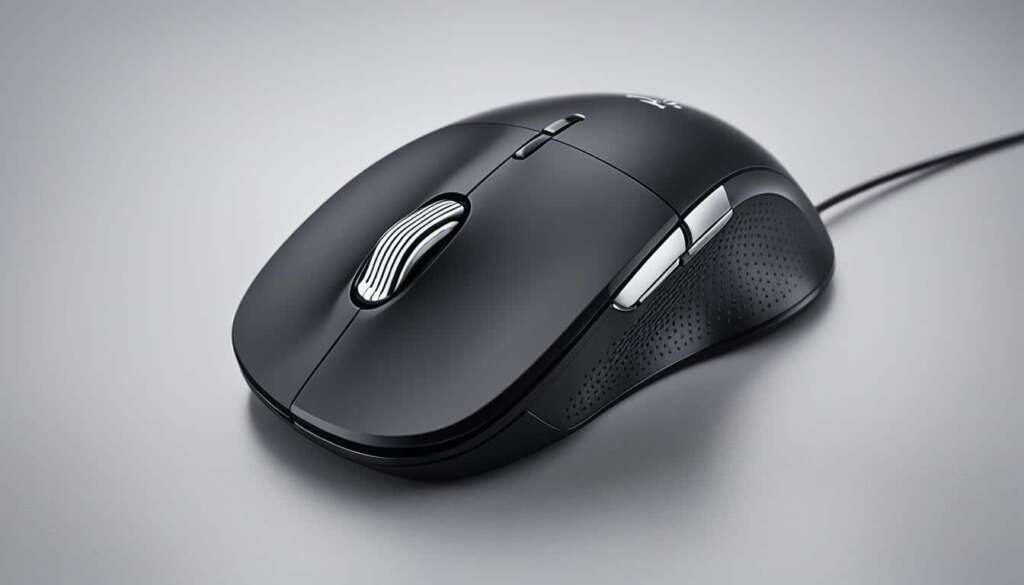Table of Contents
When it comes to modern computing, the optical mouse has become ubiquitous. But what is an optical mouse, and how does it work? In short, an optical mouse is a computer peripheral that uses light-emitting diodes (LEDs) and image recognition technology to detect movement and provide precise cursor control.
Unlike traditional mechanical mice, optical mice have no moving parts that can wear down, making them more durable and requiring less maintenance. In addition to their longevity, optical mice offer several benefits, including smooth movement and ergonomic design, that have made them a staple of modern computing.
Key Takeaways
- An optical mouse is a computer peripheral that uses LEDs and image recognition technology
- It provides precise cursor control and smooth movement
- Optical mice have an ergonomic design that reduces strain during prolonged use
- They are more durable than traditional mechanical mice
- Understanding the mechanics and benefits of an optical mouse can help individuals choose the right computer peripherals for their needs
How Does an Optical Mouse Work?
An optical mouse is a type of computer pointing device that uses light-emitting diodes (LEDs) and image recognition technology to track movement across a surface. The mechanism behind an optical mouse’s movement is relatively simple, comprising a few key components that work together to accurately translate hand movements into cursor positions on the screen.
The LED sensor at the base of the optical mouse detects changes in the surface underneath and illuminates it with LED light, allowing the image recognition system to capture and process the reflected light. Using the captured data, the mouse is able to determine its movement and translate it into movements on the screen.
The accuracy and precision of an optical mouse are partly determined by the DPI (dots per inch) sensitivity. A higher DPI setting will result in more precise movements, while a lower setting will mean that larger mouse movements are required to translate to corresponding movements on the screen.
| Optical Mouse Working Mechanisms | |
|---|---|
| Components | Function |
| LED sensor | Detects changes in the surface underneath and illuminates it with LED light |
| Image recognition system | Captures and processes the reflected light to determine the mouse’s movement |
| DPI sensitivity | Determines the accuracy and precision of movements on the screen |
An optical mouse’s working mechanism allows for smooth movement across any surface, including textured and glossy surfaces. Its high accuracy and precision provide seamless cursor control, making it an essential tool for graphic designers, gamers, and anyone who requires precise movement when working on a computer.
Benefits of Using an Optical Mouse
An optical mouse offers several benefits that make it a preferred choice for users seeking precision, smooth movement and ergonomic design. Let’s take a deeper look at these advantages:
Precision
The key advantage of an optical mouse is its high precision, which allows for accurate navigation of computer screens. The LED sensor technology used by optical mice offers improved accuracy compared to traditional ball-based mice.
Smooth Movement
The smooth movement of an optical mouse ensures seamless cursor control, making it easier to complete tasks and navigate through interfaces. Smooth movement is particularly important in fast-paced gaming environments, where even small delays or inaccuracies can result in a disadvantage.
Ergonomic Design
The ergonomic design of optical mice is a major advantage, promoting comfort and reducing strain during prolonged use. This improved design results in decreased user fatigue and can help prevent repetitive strain injuries (RSIs) from extended computer work.
Overall, the combination of precision, smooth movement, and ergonomic design make an optical mouse an excellent investment for anyone looking to improve their computer peripheral set-up.
Conclusion
Overall, the Optical Mouse has proven to be an essential tool for modern computing. Its precise cursor control, smooth movement, and ergonomic design are just a few of the many advantages that make it a preferred choice for users worldwide. By understanding the working mechanism and benefits of an optical mouse, users can make informed decisions when selecting their computer peripherals.
Whether you’re a professional designer, gamer, or simply a regular computer user, the optical mouse provides a range of advantages that significantly enhance your computing experience. With its high accuracy and sensitivity, it allows for seamless cursor control, making it easy to navigate around your screen and perform complex tasks. Furthermore, its ergonomic design ensures that prolonged use does not result in any strain or discomfort, promoting a healthy computing experience.
To summarise, the optical mouse offers a range of advantages that make it an irresistible choice for most users. Its accuracy, precision, sensitivity, and ergonomic design all contribute to its numerous benefits, making it a must-have computer peripheral. So, the next time you’re shopping for a new mouse, make sure you consider the Optical Mouse and all the advantages it has to offer!
FAQ
What is an optical mouse?
An optical mouse is a computer peripheral that uses a light-emitting diode (LED) sensor and image recognition technology to track movement. It replaces the traditional mouse ball found in older mechanical mice.
How does an optical mouse work?
An optical mouse works by emitting light from an LED sensor onto the surface beneath it. The image recognition system captures the reflected light and uses it to determine the mouse’s movement, translating it into cursor movement on the computer screen.
What is DPI and how does it affect an optical mouse’s performance?
DPI, or dots per inch, is a measure of sensitivity in an optical mouse. Higher DPI settings result in faster cursor movement and greater precision, while lower DPI settings offer slower movement but finer control.
What are the benefits of using an optical mouse?
Optical mice offer several benefits, including precise cursor control, smooth movement, and ergonomic design. They allow for accurate navigation of computer screens, ensuring efficient and productive work. The smooth movement enhances the user experience by providing seamless cursor control. Additionally, the ergonomic design of optical mice promotes comfort and reduces strain during extended periods of use.
Why should I choose an optical mouse over a mechanical mouse?
Optical mice have several advantages over mechanical mice. They do not require regular cleaning to remove dirt or dust from the mouse ball, resulting in a more reliable and hassle-free experience. Additionally, optical mice provide higher precision and smoother movement, making them ideal for tasks that require accuracy and efficiency.
Can I use an optical mouse on any surface?
Optical mice work on a variety of surfaces, including desks, mouse pads, and even cloth surfaces. This versatility makes them suitable for use in different environments, both at home and in professional settings.
How do I clean an optical mouse?
To clean an optical mouse, start by turning it off and unplugging it from the computer. Use a soft, lint-free cloth to wipe away any dirt or debris on the mouse’s surface. For the sensor, gently clean it with a cotton swab or a soft brush. Avoid using liquids or harsh chemicals, as they may damage the mouse. Once clean, plug the mouse back in and turn it on.












